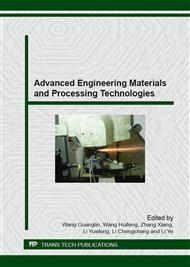p.119
p.123
p.130
p.136
p.142
p.149
p.155
p.162
p.168
Study on Influence Laws of Surface Roughness of Micro-Groove in Single Crystal Silicon under Diamond Fly-Cutting
Abstract:
Single crystal silicon has both important application value in the fields of micro-optics and MEMS, and it has been considered as one of the most difficult-to-cut materials because of its hardness and brittleness. Removal mechanism of the silicon was discussed, and the model of undeformed chip thickness was established in this article. According to the data of micro-groove surface roughness from the diamond fly-cutting experiment, the nonlinear relationship curve, between the largest undeformed chip thickness hmax and microgroove surface roughness Ra, were obtained using Gaussian-fitting principle, and the regression equation of the fitting curve was also got. Thus the prediction mathematical model of microgroove surface roughness was derived. The influence laws of the main working parameters on the Ra were obtained based on the result of this experiment and the response surface of the prediction model, and some conclusions were summarized: the surface roughness Ra of microgroove in the single crystal silicon decreases with the decrease of the cutting depth ap, the feed f and the increase of the spindle speed n under the diamond fly-cutting; the experimental results also showed that feed f affects the value of Ra very much, cutting depth ap less, and spindle speed n the least.
Info:
Periodical:
Pages:
142-148
Citation:
Online since:
October 2015
Authors:
Price:
Сopyright:
© 2016 Trans Tech Publications Ltd. All Rights Reserved
Share:
Citation:


